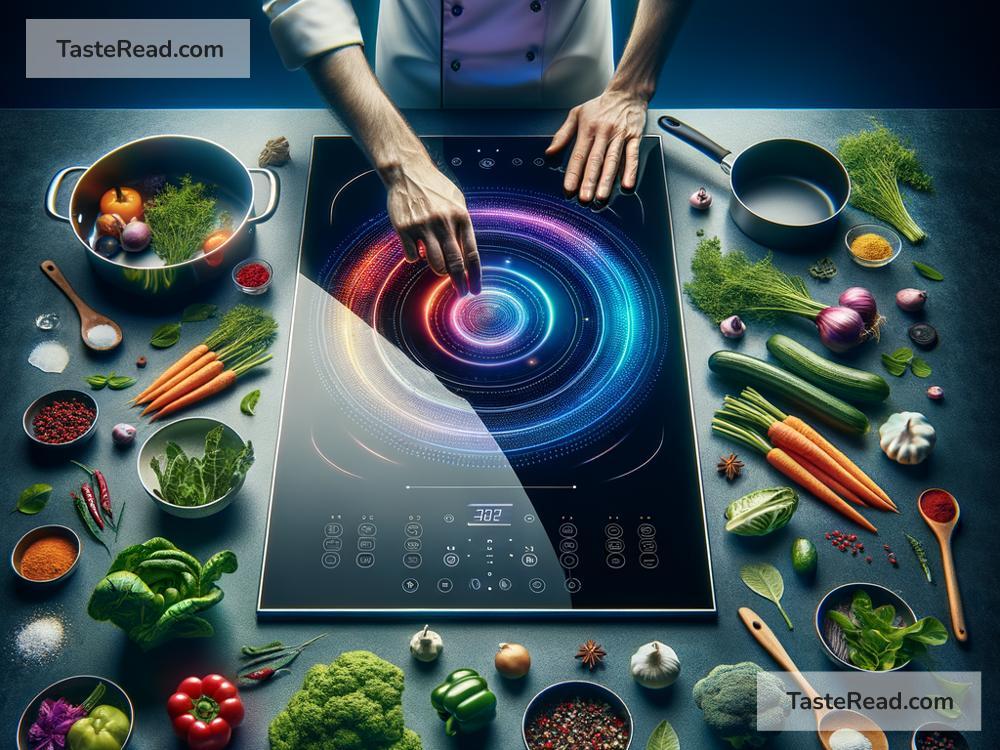The Science of Cooking with Magnetism: Techniques and Tips
Cooking is one of life’s simplest joys, but did you know there’s a fascinating science behind how food is prepared? One of the most innovative advancements in kitchen technology is the use of magnetism in cooking. It may sound complex or futuristic, but magnetic cooking—commonly seen in induction cooktops—is surprisingly straightforward and has many benefits for home cooks.
In this blog post, we’ll explore the science behind cooking with magnetism, explain how it works, share some techniques, and offer tips to make your magnetic cooking experience even better.
What Is Magnetic Cooking?
Magnetic cooking is based on induction technology. Instead of using a flame or electric coil to transfer heat to cookware, induction stoves heat pots and pans directly using magnetic energy. Here’s how it works:
- Magnetic Field: Induction cooktops generate a magnetic field using coils of copper wire underneath the glass cooking surface.
- Electromagnetic Reaction: When an induction-compatible pan (made of a magnetic material like stainless steel or cast iron) is placed on the stovetop, the magnetic field creates an electric current within the pan.
- Direct Heat: This electric current heats the cookware directly, rather than the stovetop itself. The heat transfers evenly across the pan, ensuring efficient and precise cooking.
It’s an incredible process that relies on fundamental physics. Because the cooktop itself doesn’t heat up in the way traditional stoves do, magnetic cooking can be safer, faster, and more energy-efficient.
Why Cook with Magnetism?
Magnetic cooking offers several benefits that make it a favorite among professional chefs and home cooks alike. Here are some of the main advantages:
- Energy Efficiency: Since induction stoves only heat the cookware and not the surrounding air, they use less energy compared to gas or electric stoves.
- Speed: Induction heating is faster because the heat is generated directly in the cookware. You can boil water or cook meals much quicker.
- Precision Control: Magnetic cooking allows precise control over cooking temperatures, which is essential for recipes like sauces or delicate dishes.
- Safety: Because the cooktop itself stays cool, the risk of burns is significantly lower. Also, if you accidentally leave the burner on without a pan, it won’t work—there’s no heat generated unless cookware is on the surface.
- Easy Cleaning: The glass surface of induction cooktops is flat and smooth, so cleaning up spills is simpler. Since the surface doesn’t get hot, spilled food won’t burn and stick.
Tips for Magnetic Cooking
If you’re new to cooking with magnetism, here are some tips to ensure you get the most out of your induction cooktop:
-
Choose the Right Cookware: Not all pots and pans work with induction. Look for cookware made of magnetic materials such as stainless steel or cast iron. A simple test is to hold a magnet to the bottom of the pan—if the magnet sticks, the pan is induction-compatible.
-
Flat Bottoms Are Best: Induction cooking works best with cookware that has a flat bottom. This ensures full contact with the cooktop and allows the heat to be evenly distributed.
-
Use Low-Medium Heat for Delicate Foods: Induction stoves can get very hot very quickly. For foods that burn easily, such as eggs or fish, start with low heat and gradually increase if needed.
-
Master Temperature Settings: Experiment with the stovetop’s settings to understand how quickly it heats and cools. Induction cooktops respond much faster than gas or electric stoves, so adjusting the heat while cooking becomes much easier.
-
Make Good Use of the Timer: Many induction stoves have built-in timers, which can be helpful for precise cooking tasks like simmering a soup or cooking rice perfectly.
-
Clean Spills Immediately: Since the cooktop doesn’t get dangerously hot, you can wipe away spills right away without worrying about burns or stuck-on messes.
Techniques to Try
Magnetic cooking allows for exciting techniques that take your meals to the next level:
-
Searing: Thanks to induction’s quick heating capabilities, you can achieve a perfect sear on your steaks or chicken breasts. Just preheat your pan on high for a minute and add a splash of oil before cooking.
-
Simmering: Induction stoves are excellent for maintaining consistent low heat, ideal for simmering soups, sauces, or stews without boiling over.
-
Melting Chocolate: The precise temperature control makes it easy to melt chocolate without scorching it. Use low heat and stir constantly for a smooth result.
-
Boiling Water: Induction cooktops can boil water in record time, making them convenient for pasta, tea, or blanching vegetables.
The Future of Cooking
Magnetic cooking is not just a trend—it’s shaping the future of kitchens. With its speed, efficiency, and safety, induction technology is appealing to both casual cooks and culinary enthusiasts. It’s also more environmentally friendly since it consumes less energy and creates less heat waste.
Experimenting with magnetic cooking opens up endless possibilities. Whether you’re trying to simmer soup to perfection or sear the ideal steak, induction stoves offer unmatched precision and control. With the right cookware and a few simple techniques, you can maximize your cooking experience while exploring the science behind magnetism.
So, if you’re ready to level up your kitchen game, consider embracing the science of cooking with magnetism. It’s fast, smart, safe, and delicious—what’s not to love?


